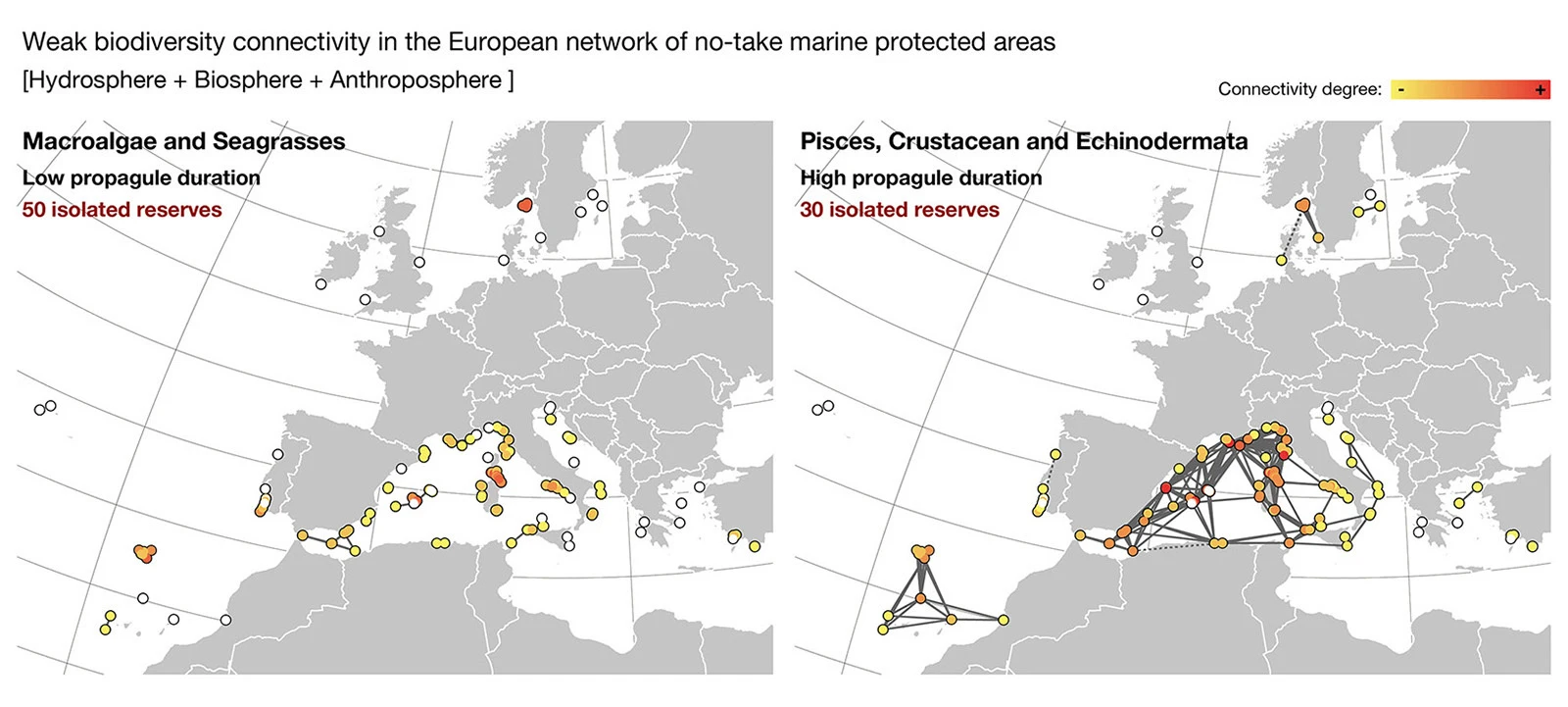Scientific publication
Network of marine reserves weak in protecting biodiversity
Biophysical modelling tuned with data on species dispersal ecology predicted low connectivity for a vast spectrum of biodiversity in the European network of marine reserves.
Credits: Photo by Paul Einerhand on Unsplash
Marine Protected Areas (MPAs) are key tools for ocean resource management and conservation. They prevent marine biodiversity declines and increase the resilience of ecosystems by protecting critical habitats and spawning biomass, as well as by supplying propagule and adult spillover to adjacent unprotected areas. To enhance the protection benefits, networks of individual MPAs operating synergistically are increasingly preferred over single MPAs, as they comprehensively protect whole species, across the spectrum of marine biodiversity. One criteria for effective MPA networks is the establishment and maximization of connectivity links between individual MPAs, allowing to promote the dispersal of eggs, larvae, juveniles and/or adults.
The extent to which individual MPAs are connected remains mostly unknown, but a new study sheds light on the subject. By using a biophysical model tuned with data on species dispersal ecology (i.e., the capacity of species to disperse in the ocean) the researchers predicted connectivity of a vast spectrum of biodiversity in the European network of marine reserves (i.e., no-take MPAs, with no extractive activities allowed). The results of the study showed weak network connectivity and strong isolation for major groups of marine biodiversity, resulting from the lack of connectivity corridors between reserves over vast regions.

The high isolation predicted for ecosystem structuring species (e.g., corals, sponges, macroalgae and seagrass) might potentially undermine biodiversity conservation efforts if local retention is insufficient and unmanaged populations are at risk. This isolation might also be problematic for populations’ persistence in the light of climate change. Mass mortality events and distributional shifts, already observed along the the Atlantic Ocean and in the Mediterranean Sea, are expected to increase for all ecological groups. With no connectivity links between conservation areas, populations might be threatened, with mitigation strictly dependent on the broad compliance of the Paris Agreement (UN Framework Convention on Climate Change), limiting greenhouse gas emissions and setting warming bellow 1.5 °C on average.
The study provides novel insights for management directives, by stressing the need for implementing new reserves along European waters. Similarly to terrestrial migration corridors, new stepping-stone reserves guarantee safe passages for marine biodiveristy in the years to come.
Main reference
Assis, J., Fragkopoulou, E., Serrão, E. A., Horta e Costa, B., Gandra, M., and Abecasis, D. (2021). Weak biodiversity connectivity in the European network of no-take marine protected areas. Science of the Total Environment.
- Featured publications